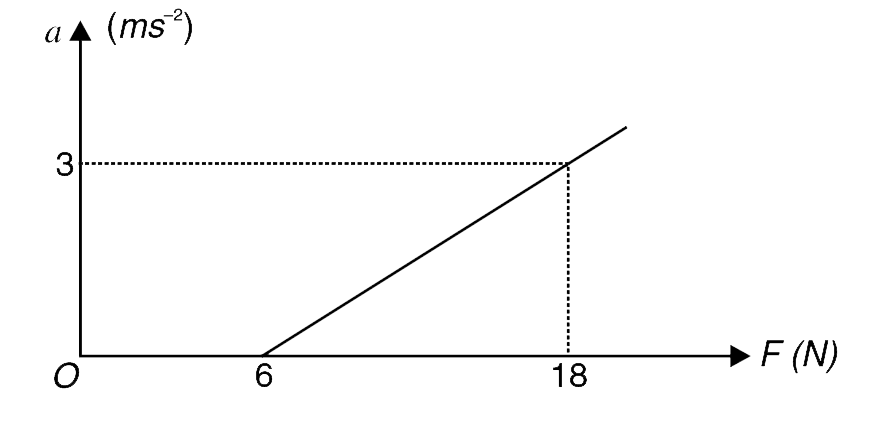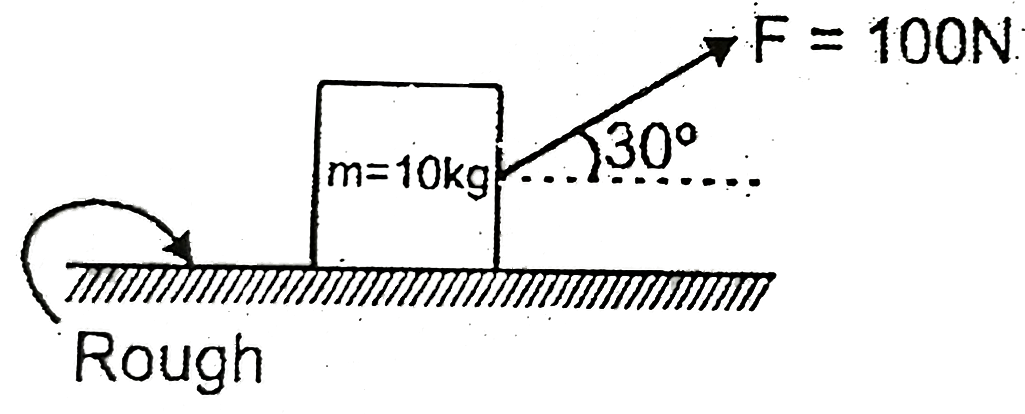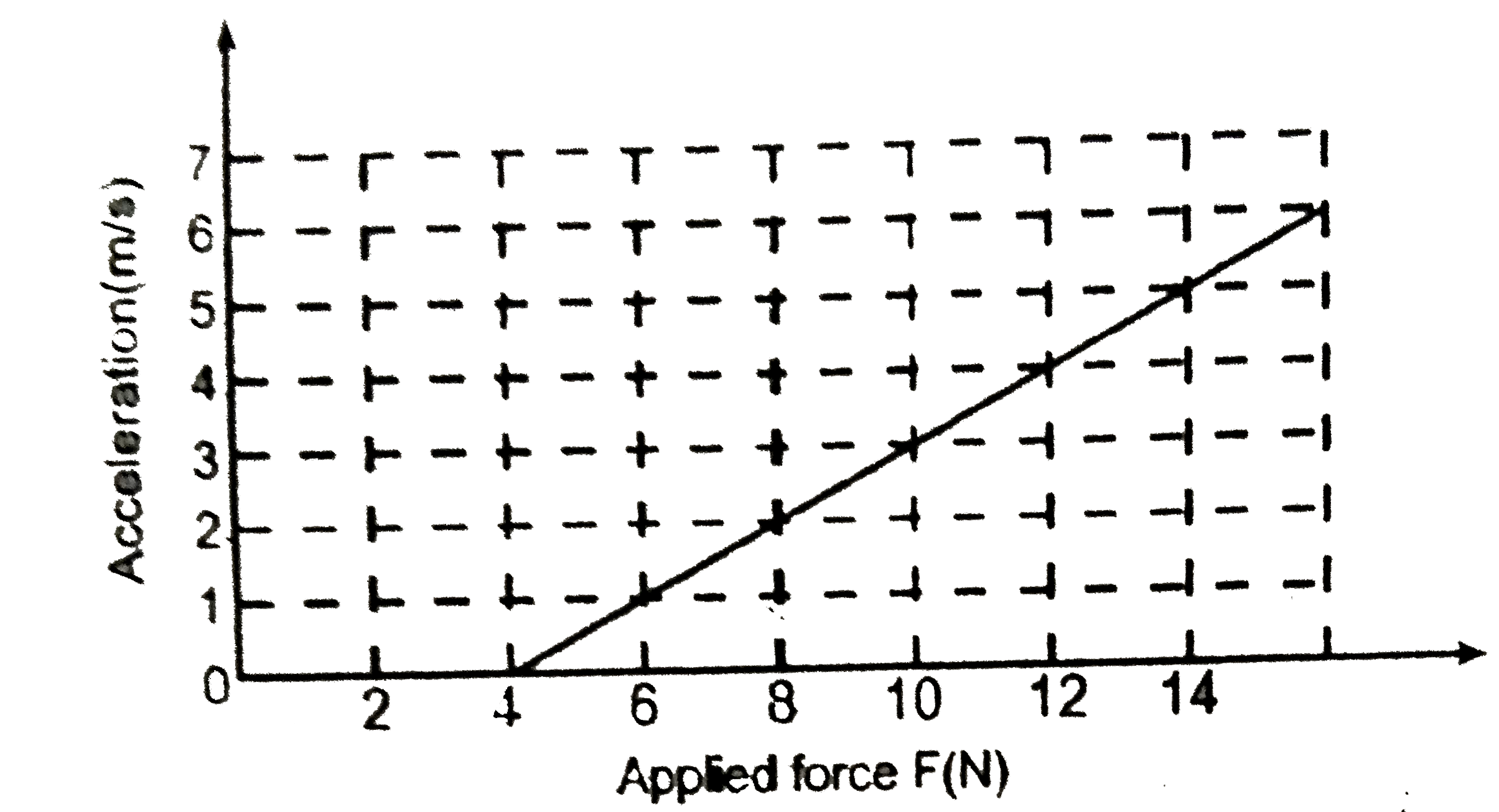A block with a weight of 4.0 N is at rest on a horizontal surface A 1.0 N upward force is applied to the block by means of an attached vertical string. What are the (a) magnitude and (b) direction of the force of the block on the horizontal surface ?
To solve the problem step by step, we will analyze the forces acting on the block and determine the force exerted by the block on the horizontal surface.
Step 1: Identify the forces acting on the block
The block has a weight of 4.0 N acting downward due to gravity. An upward force of 1.0 N is applied through a vertical string.
Step 2: Calculate the net force acting on the block
The net force acting on the block can be calculated by considering the downward force (weight of the block) and the upward force (force from the string).
- Downward force (weight) = 4.0 N
- Upward force (from the string) = 1.0 N
Net force = Downward force - Upward force
Net force = 4.0 N - 1.0 N = 3.0 N (downward)
Step 3: Determine the force exerted by the block on the horizontal surface
According to Newton's third law, the force exerted by the block on the surface is equal in magnitude and opposite in direction to the net force acting on the block.
Since the net force acting on the block is 3.0 N downward, the force exerted by the block on the horizontal surface will also be 3.0 N, but it will act upward (as per Newton's third law).
Step 4: State the magnitude and direction of the force
- (a) Magnitude of the force exerted by the block on the horizontal surface = 3.0 N
- (b) Direction of the force = upward
Final Answer
(a) 3.0 N
(b) Upward
---
The block has a weight of 4.0 N acting downward due to gravity. An upward force of 1.0 N is applied through a vertical string.
The net force acting on the block can be calculated by considering the downward force (weight of the block) and the upward force (force from the string).
- Upward force (from the string) = 1.0 N
Net force = 4.0 N - 1.0 N = 3.0 N (downward)
According to Newton's third law, the force exerted by the block on the surface is equal in magnitude and opposite in direction to the net force acting on the block.
- (a) Magnitude of the force exerted by the block on the horizontal surface = 3.0 N
- (b) Direction of the force = upward
(a) 3.0 N
(b) Upward
Topper's Solved these Questions
- BOOK - RESNICK AND HALLIDAYCHAPTER - FORCE AND MOTION - I EXERCISE - PRACTICE QUESTIONS (Single Correct Choice Type)36videos
FORCE AND MOTION - I
- BOOK - RESNICK AND HALLIDAYCHAPTER - FORCE AND MOTION - I EXERCISE - PRACTICE QUESTIONS (More than One Correct Choice Type)5videos
FORCE AND MOTION - I
- BOOK - RESNICK AND HALLIDAYCHAPTER - FORCE AND MOTION - I EXERCISE - CHECKPOINT5videos
FORCE AND MOTION - I
- BOOK - RESNICK AND HALLIDAYCHAPTER - FLUIDSEXERCISE - PRACTICE QUESTIONS (Integer Type )5videos
FLUIDS
- BOOK - RESNICK AND HALLIDAYCHAPTER - FORCE AND MOTION-IIEXERCISE - PRACTICE QUESTIONS (Integer Type)1videos
FORCE AND MOTION-II
Similar Questions
A block rests on a horizontal surface. A horizontal force F is applied to the block. The acceleration (a) produced in the block as a function of applied force (F) has been plotted in a graph (see figure). Find the mass of the block.
 View Solution
View SolutionA block of mass 10kg is placed on a horizontal surface as shown in the figure and a force F=100N is applied on the block as shown, in the figure. The block is at rest with respect to ground. If the contact force between block and ground is 25n (in Newton) then value of n is : (Takeg=10m/s2)
 View Solution
View Solution
Knowledge Check
- Question 1 - Select One
A block of mass 1 kg is placed on a horizontal surface . The reaction force to the weight of the block is
AThe 10 N normal force from the surfaceBThe 10 N reaction force from the block of the surfaceCThe weight of the earthDA 10 N force on earth - Question 2 - Select One
A block of unknown mass is at rest on a rough, horizontal surface. A horizontal force F is applied to the block. The graph in the figure shows the acceleration of the block with respect to the applied force. The mass of the block is
 A1.0kgB0.1kgC2.0kgD0.2kg
A1.0kgB0.1kgC2.0kgD0.2kg - Question 3 - Select One
A block of mass 2 kg rests on a horizontal surface. If a horizontal force of 5 N is applied on the block, the frictional force on it is (take,uk=0.4,μs=0.5)
A5NB10NC8NDzero
A 30kg block rests on a rough horizontal surface A force of 200N is applied on the block The block acquires a speed of 4m/s starting from rest in 2s What is the value of coefficient of friction ? .
View SolutionA block of mass 3kg is placed on a rough horizontal surface (μs=0.4) . A force of 8.7N is applied on the block. The force of friction between the block and floor is .
View SolutionA horizontal force of 20 N is applied to a block of 10 kg resting on a rough horizontal surface. How much additional force is required to just move the block, if the coefficient of static friction between the block and the surface is 0.4 ?
View SolutionA block of mass m is placed on a rough horizontal surface. The coefficent of friction between them is μ. An external horizontal force is applied to the block and its magnitude is gradually increased. The force exerted by the block on the surface is R.
View SolutionA block of mass m is lying on horizontal surface of coefficient of friction μ. A force is applied to the block at an angle θ with the horizontal. The block will move with a minimum force F if
View Solution

